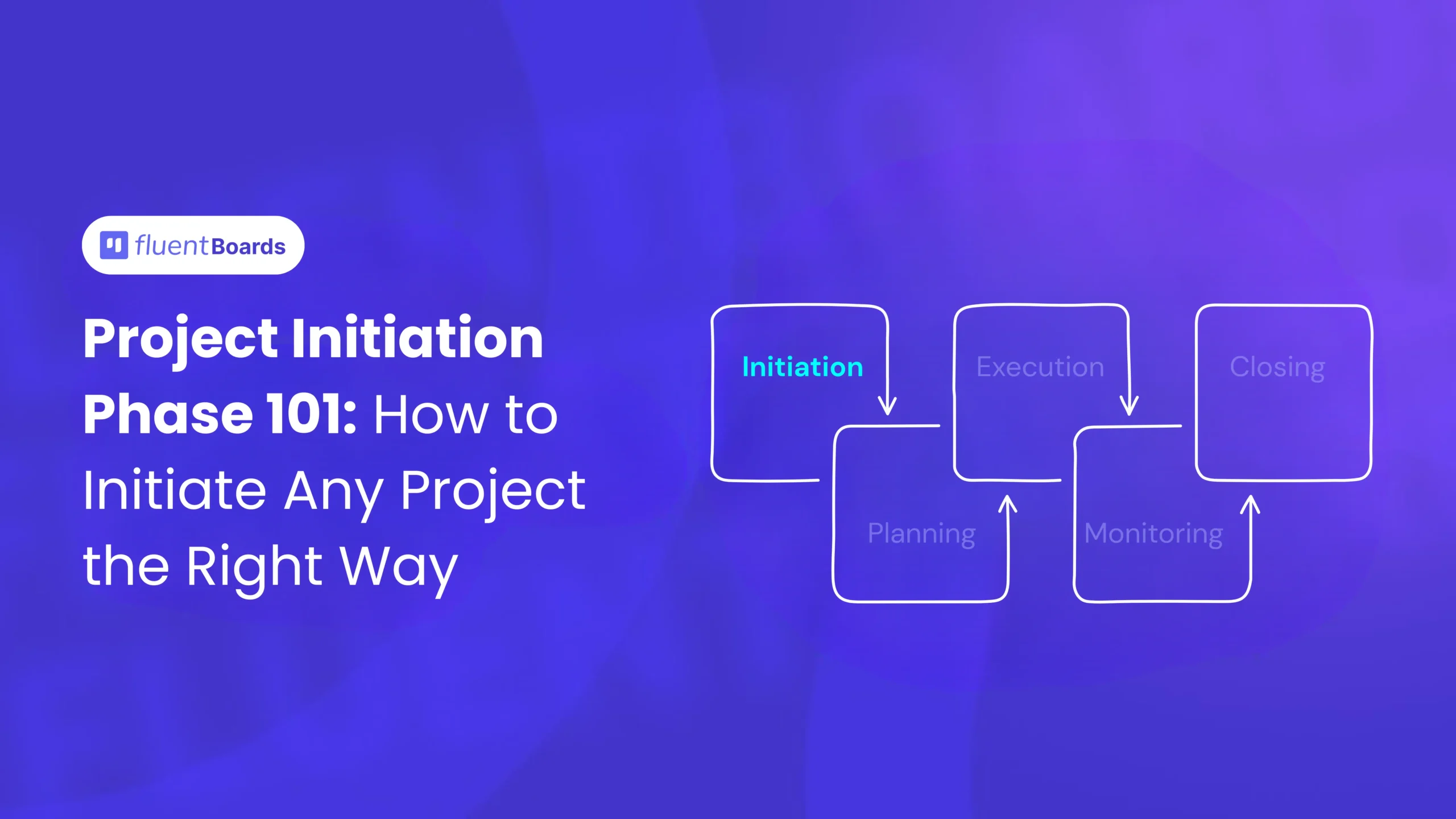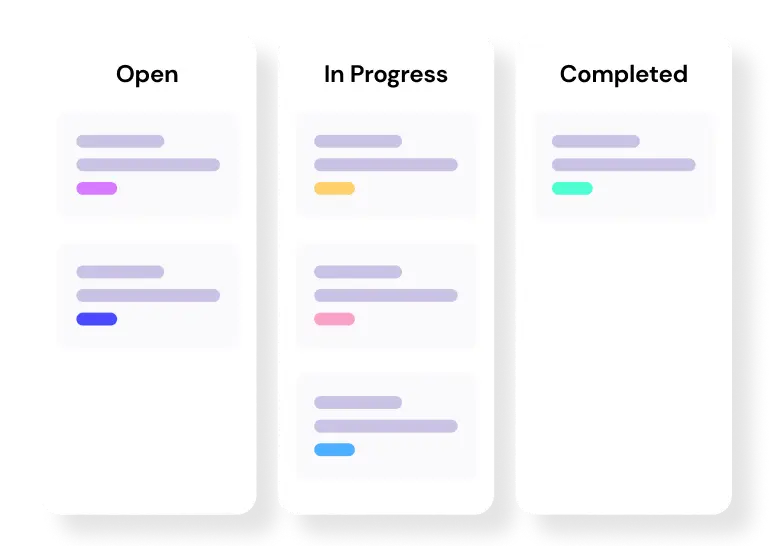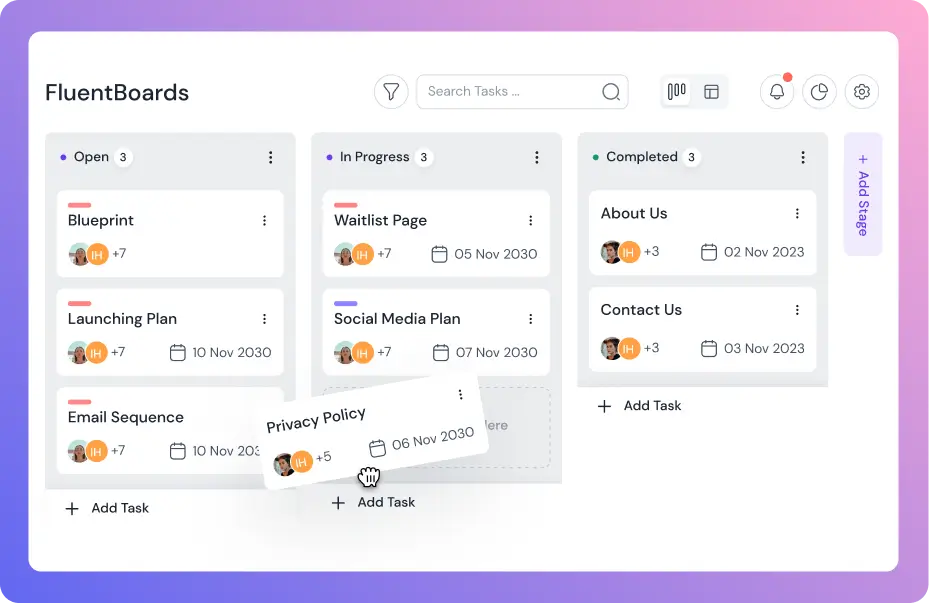
Project Initiation Phase 101: How to Initiate Any Project the Right Way
Does the morning really show the day?
Maybe! Maybe not!
But one thing’s for sure: every successful project starts strong, and that strong start begins with a well-planned project initiation phase.
Whether you’re launching a product, redesigning a website, or building internal systems, you can’t just dive in!
You need clarity, alignment, and confidence that the project is worth doing.
And, in this blog, we’ll break it all down: what the project initiation phase is, how to do it right, and what risks you run if you skip it.
Let’s dive in.
What is the project initiation phase?
The project initiation phase is the very first step in the project management life cycle, where you define the “what” and “why” of the project. In this phase, a simple idea starts taking shape into something real and actionable.
Project initiation can be perfectly described by Socrates’ famous quote: “Know thyself!”
In this phase, you ask, answer, and understand basic but crucial questions like:
- What is the project about?
- Is this project even worth doing?
- Is your team capable of doing this project?
- What will you achieve by the end?
So, the goal of the project initiation phase is super simple: it’s all about determining whether the project is feasible, valuable, and aligned with business goals.

Level up your WordPress project management game with this Trello equivalent solution – where limitless possibilities come at an unbeatable price!
Why Does the Project Initiation Phase Matter?
A project without a strong initiation phase is like building on sand; uncertain, unstable, and likely to crumble. A well-initiated project? That’s building on solid ground.
The project initiation phase is where everything begins, and it sets the tone for everything else. Skip it or rush through, and you risk unclear goals, misaligned stakeholders, wasted resources, and, ultimately, project failure.
Here’s why the project initiation phase truly matters:
- It clarifies the purpose and direction of the project so everyone understands the mission before the real work begins
- By identifying risks, resource needs, and feasibility early, you prevent surprises later during execution
- It gets all decision-makers and contributors on the same page from day one
- A clear foundation enables better planning, budgeting, and task breakdowns in later phases
- It defines what success looks like, reducing scope creep and misunderstandings
- It helps teams focus on what really matters, avoiding distractions and misaligned efforts
- A well-initiated project offers a realistic estimate of time, budget, and resources, preventing overpromising or underdelivering
- With a strong foundation in place, the project execution process becomes smoother and quicker
Also Read: Why Project Management Matters
The Differences Between Project Initiation and Project Planning
Though project initiation and project planning may sound similar, they serve very different purposes in the project management life cycle.
In short, we can say:
- Initiation Phase = “Should you do it?”
- Planning Phase = “How will you do it?”
The goal of project initiation is to decide whether the project should move forward. If the answer is yes, you get approval and create a project charter or brief.
On the other hand, project planning begins once the project is approved. In this phase, you create a project management to-do list to execute the project successfully.
What are the Key Components of Project Initiation?
The project initiation phase lays the foundation of a project and to do it right, you need to focus on these key project initiation components:
- Business case: The business case explains the problem or opportunity, expected benefits, and how the project supports your business objectives.
- Feasibility study: A feasibility study evaluates technical, financial, and operational factors to determine whether the project is doable.
- Project goal: The project goal is the high-level outcome you want to achieve. It provides a clear direction and acts as the north star for all project decisions.
- Project objectives: Project objectives are specific and measurable results that support the overall goal.
- Stakeholder identification: Stakeholder Identification is all about understanding who’s involved in the project and who will be affected by it.
- Project charter: The project charter is the official go-ahead. It authorizes the project, outlines responsibilities, and gives the project manager authority to proceed.
Though they aren’t exclusive to the project initiation phase, here are some other key elements you should closely consider before starting:
- Project scope: At the initiation stage, the project scope is still broad. But you should define the general boundaries of the project; what’s included and what’s not.
- Initial risk assessment: Even in the early stages, identifying potential risks can help you avoid surprises down the line.
- Initial resource overview: You don’t need a full resource plan yet, but you should have a rough idea of what’s required: team members, tools, technology, budget, and time.
- Project deliverables: Though you’ll finalize the project deliverables in the planning phase, you should have an initial idea of what the project is supposed to create, improve, or deliver once completed.
Remember: If you want to build a solid foundation for your project, treat all the components of the project initiation phase with utmost importance. Yes, dealing with some of these in the very early stage might feel unnecessary, but at least have a general idea about each one before you kick off!
Project Initiation Checklist: How to Initiate a Project the Right Way
Here’s a step-by-step project initiation checklist to help you launch your project the right way:
1. Create a business case
Before jumping into action, clearly define why the project should exist.
The business case outlines the problem you’re solving (or the opportunity you’re seizing), the benefits expected, and how this project aligns with business goals.
Think of it as your project’s pitch; if it doesn’t make sense here, it probably won’t work later!
2. Define project goals, objectives, and deliverables
With your “why” in place, set your what and how much.
- Goals: The high-level outcomes you want to achieve
- Objectives: Specific, measurable targets that lead to the goal
- Deliverables: What will the project actually produce? Will it be a product, a process, or a service?
This step gives your project a clear direction and sets expectations!
3. Evaluate initial scope, risks, and resources
At this stage, you don’t need a detailed plan, but you do need a rough idea of:
- Scope: What’s in and what’s out.
- Risks: What could go wrong, even at a basic level?
- Resources: Who and what you’ll need; people, tools, budget, and time.
This helps prevent surprises and over-promising later on!
4. Complete a feasibility analysis
Now, answer the big question: Is this project doable?
Conduct a basic feasibility study to assess whether the project makes sense financially, technically, and operationally.
This step validates your idea with real-world constraints!
5. Identify key stakeholders and get their approval
Figure out who has a stake in the project: executives, clients, team members, or anyone who might be affected.
Communicate with them early to align expectations and secure buy-in.
Their approval is often the green light you need to proceed!
6. Create a project charter
Once you’ve got the green light, it’s time to formalize it.
The project charter officially authorizes the project, defines roles and responsibilities, and gives the project manager authority to proceed.
It’s your official “go-ahead” document!
7. Assemble your team
Now that you’re authorized to move forward, gather your core project team. Depending on the size of the project, this might include team leads, technical experts, or cross-functional collaborators.
Remember: At this stage, it’s less about detailed project team roles and more about aligning the right people early!
8. Conduct a final review
Before transitioning to the planning phase, review everything:
- Is the business case still solid?
- Are stakeholders aligned?
- Are you clear on the goals, risks, and resources?
This final check ensures you’re not missing any key pieces before moving into detailed planning.
Real-Life Project Initiation Example: How a Marketing Team Initiates a Website Redesign Project
Let’s say a company’s marketing team notices two concerning trends:
- The current site’s bounce rate is 65% on mobile
- Abandoned carts have increased by 18% in the past 6 months
Instead of jumping straight into the redesign, they decide to identify the problems first! In this case, these could be:
- The website’s poor performance is affecting lead conversions
- It feels outdated and loads slowly
- Copy and visual elements are inconsistent and underwhelming
- The user journey is unclear
- The site no longer reflects the brand’s image or direction
Now, to ensure a strong foundation, they will follow these steps as part of a proper project initiation phase:
Step 1: Build the business case
They develop a business case to justify the redesign. A redesigned website could:
- Reduce bounce rate
- Reduce cart abandonment
- Increase revenue by $150k/year
- Better support for content marketing and future campaigns
Step 2: Define project goals, objectives & deliverables
Now they will decide project goals, objectives & deliverables.
Here, their goal could be to modernize the site to improve user experience, increase conversions, and improve mobile usability.
They set project objectives, such as:
- Redesign the user journey
- Improve page speed by 50%
- Fix SEO errors
- Ensure full mobile responsiveness
- Reduce checkout steps from 5 to 3
And the initial deliverables:
- Fully redesigned website
- Updated UI/UX assets
- Migration plan for existing content
- SEO-optimized structure
Step 3: Conduct a feasibility study
Now, they evaluate whether the project is technically and financially viable in the current quarter. Key questions include:
- Do they have the internal resources to execute it?
- Will they need to hire an external agency or freelancers?
Step 4: Identify stakeholders
Next, they identify the key stakeholders who need to be involved early:
- Marketing team
- UI/UX design team
- Web development team
- Executive leadership
Step 5: Create a project charter
- A formal project charter is created, outlining:
- The overall goal and scope
- Key deliverables and roles
- Timeline and budget estimates
- Initial resource requirements
This charter is then discussed with stakeholders to gain alignment and approval.
And, here we go!
Now the project is ready to move into the planning phase, confidently, strategically, and with a strong foundation.
Common Project Initiation Challenges
Here are some common challenges managers often face at this early stage of a project:
- Getting stakeholder alignment: Convincing all stakeholders to agree on the project’s purpose, scope, and priorities can be tougher than expected.
- Unclear project requirements: Often, the initial idea is vague. Pinning down specific goals and deliverables takes time and effort.
- Unrealistic expectations: Stakeholders may expect quick results or underestimate the complexity before any planning is done.
- Limited resource visibility: It’s difficult to know what’s available (budget, tools, people) at this early stage, yet critical decisions depend on it.
- Time pressure to move fast: Managers are often pushed to start execution quickly before laying a strong foundation.
Remember: The project initiation phase is full of moving parts, and it’s easy to get lost if you’re not prepared. So, make sure you’re well-prepared, and for better identification of potential challenges, check out our blog on common project management challenges.
Strong Starts, Smooth Finishes
The initiation phase might not involve flashy task boards or looming deadlines, but it’s arguably the most important part of any project’s journey.
It’s where you set the tone, define the vision, and ensure the effort is truly worthwhile!
Skip this phase, and you risk building on shaky ground. Get it right, and you give your team the clarity and confidence to execute with purpose.
So next time you’re kicking off a new project – pause, plan, and initiate.
Thanks for reading this far. Wishing you all the best on your project management journey!
Let’s redefine project management with FluentBoards!
Get Tips, Tricks, & Updates
We won’t send you spam.











![how to create a project management workflow [x steps] (2)](https://fluentboards.com/wp-content/uploads/2025/11/How-to-create-a-project-management-workflow-x-steps-2-768x402.webp)



Leave a Reply